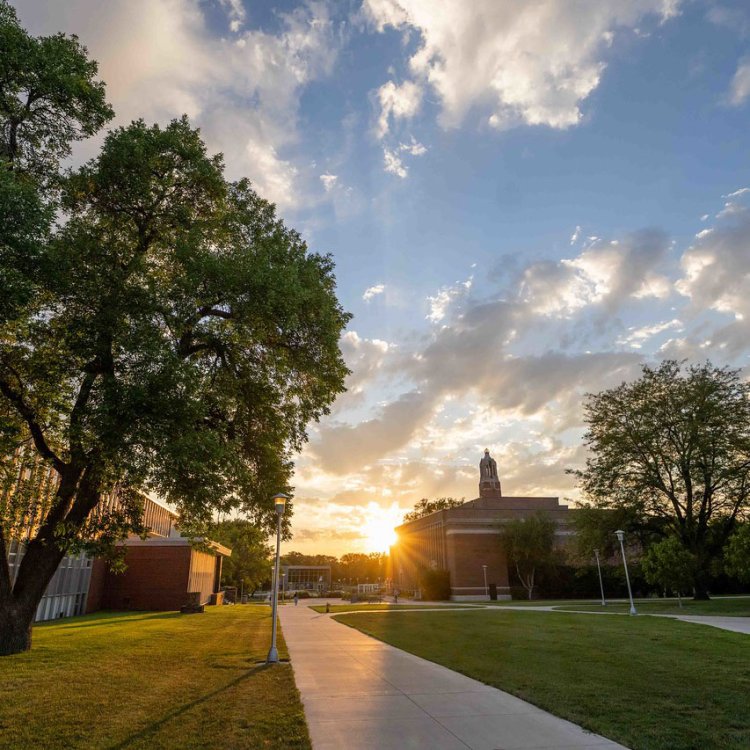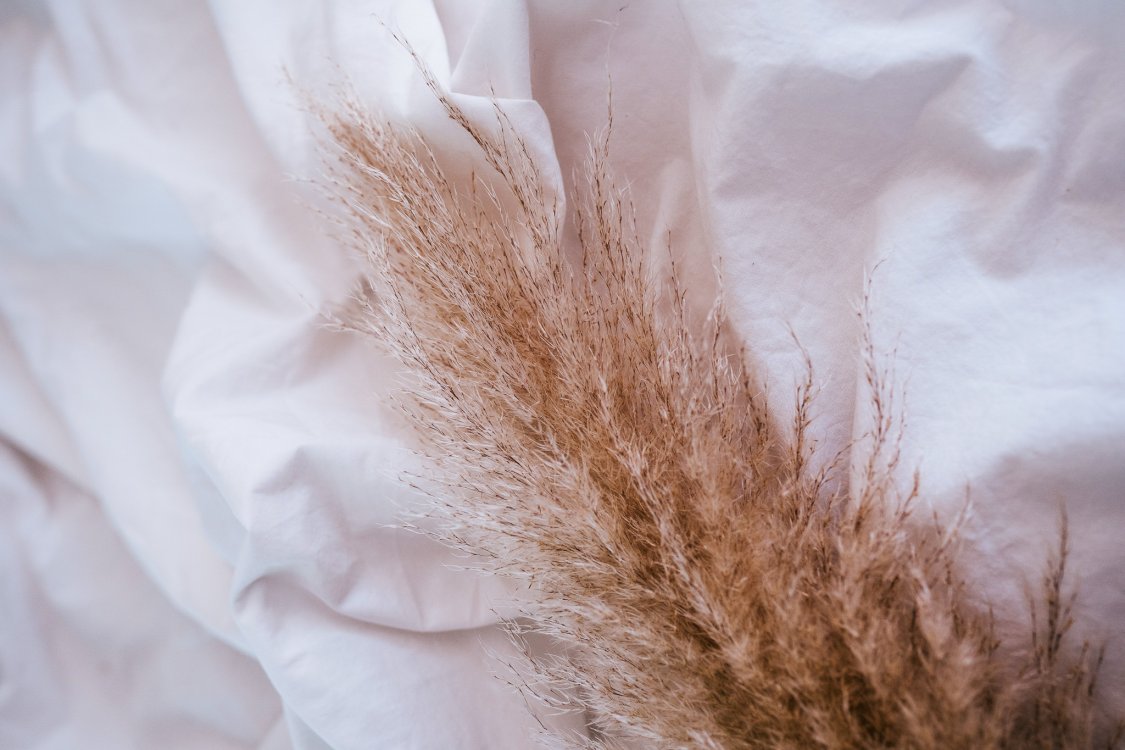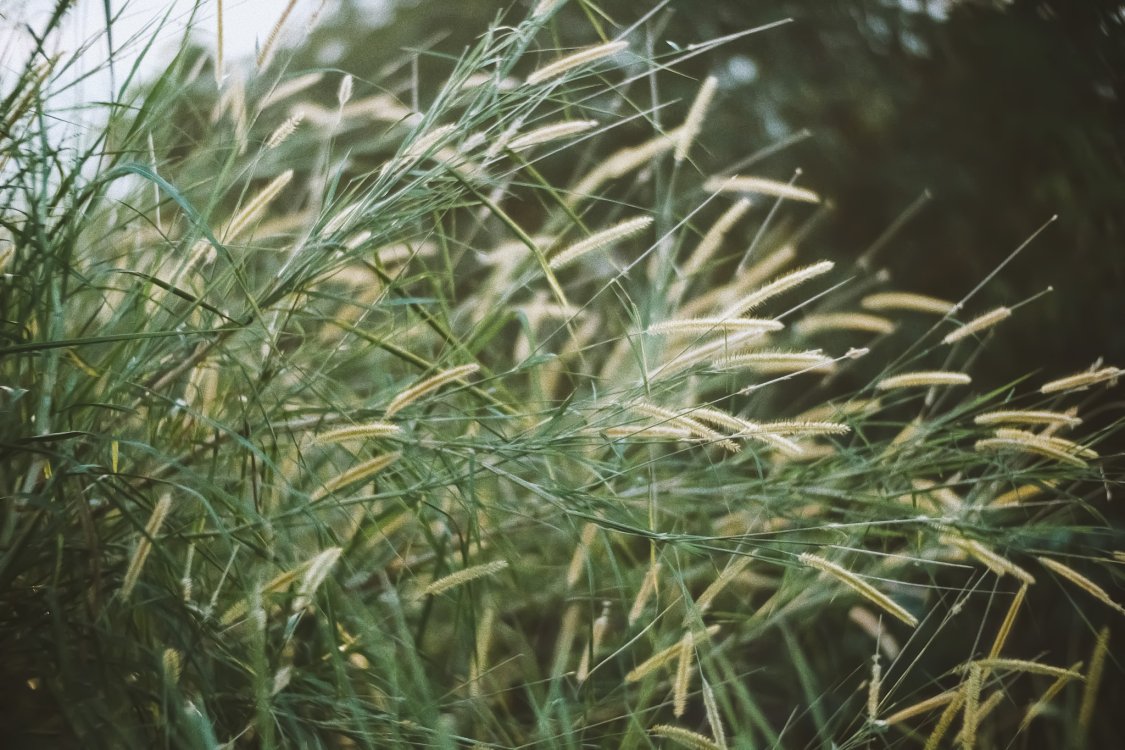The Sun Grant Initiative (SGI) is a national network of partnered land-grant universities working to fully realize and advance a rural-centric bio-based economy. This network is organized into five biogeographical regions, each with a lead Sun Grant Center to facilitate the development of regional biomass-to-bioproducts research.
- Achievements and Value of Sun Grant Centers
- Regional centers and their supported projects
- Project Spotlight
Since 2005, SGI has allocated a significant portion of its research portfolio to further bio-based product development, including biofuels, bioenergy and value-added biopolymers. The initiative has funded fundamental and applied research through its competitive grants program, and leveraged the research projects with multiple benefits and tangible outcomes.
The investments have led to translational discoveries and advancements that are now available for realizing innovative products that are ready for commercialization in value-added markets and applications. The SGI provides a springboard for realizing these well-positioned technologies.

Achievements and Value of Regional Sun Grant Centers
The Regional-specific structure of the Sun Grant Initiative provides an effective means for tailoring research, education and extension activities since the U.S. has varying climates, feedstock availability, industries, markets and demographics.
The Regional Center model promotes National Security and diversified bioeconomic pathways that mitigate risk and work toward system-level optimization, among other benefits. With investments by the U.S. Department of Agriculture, Department of Energy and Department of Transportation and the non-Federal cost, share, we have realized tangible outcomes that include:
- 3x economic impact from invested Federal funds.
- Creation of over 1,000 jobs through research investments.
- Nearly $200 million of economic activity was added to regional and national domestic product.
Regional Sun Grant Centers and Projects Supported during the 2019-2024 Program
Tim G. Rials
Chairman, Sun Grant Association
North Central Region - South Dakota State University
Synthesis of novel biomass-derived plastics using photo energy;
- PI: Q. Chu
- University of North Dakota
Production of 3D graphene and biofuel from renewable lignin through flash catalytic thermochemical processes;
- PI: Z. Gu
- South Dakota State University
Nutrient balancing for valorizing biofuel byproducts;
- PI: G. Vemuri
- Sasya LLC
Biomass-derived cellulose-based triboelectric devices for energy harvesting and self-powered sensing;
- PI: Y.C Wang
- University of Illinois
Developing a novel, molten salt torrefaction process to enable solar- or waste-heat driven torrefaction;
- PI: A. Gladen
- North Dakota State University
Genetic engineering of E. coli to produce high-value chemicals using raw beet juice as a sole carbon source;
- PI: R. Zhou
- South Dakota State University
Bioprocessing of canola meal to produce value-added products for various applications;
- PI: B. Karki
Develop smart biochar-based controlled-release nitrogen fertilizers for sustainable corn production;
- PI: L. Wei
Investigating green and renewable polymers to combat drought;
- PIs: T. Letcher and M. Messerli
Metabolic engineering of E. coli to produce high-value chemicals using raw beet juice;
- PI: R. Zhou
Extraction and delivery of bioactive compounds from fruit waste pomace using milk proteins
- PI: M. Mohan
Lignin Nanofibers: Sustainable plant-based solution for performance enhancement of asphalt used for highway construction
- PI R. Ghabchi
Advanced processing of renewable polymers for combating drought
- PI: M. Messerli
South Dakota State University
Morrill Hall 200, Box 2201
Brookings, SD 57007
605-688-5642
Dr. Stephen Gent
Director, North Central Regional Sun Grant Center
Email Dr. Gent
Dr. Daniel Scholl
Vice President for Research and Economic Development
Email Dr. Scholl
Dr. Dianne Nagy
Interim Associate Vice President for Research Assurance and Sponsored Programs
Email Dr. Nagy
Northeast Region - Pennsylvania State University
Pennsylvania State University
225 Agricultural Engineering
University Park, PA 16802
607-255-554
South Central Region - Oklahoma State University
The mechanism of cellulase enzyme mimicking catalysts;
- PI: A. Amarasekara
- Prairie View A&M University
Intercropping winter leguminous cover crops for sustainable energy cane production;
- PI: F. Dou
- Texas A&M University
Potential for using sweetgum plantations as a biofuel feedstock in the south-central region: Productivity, economics and land-owner willingness;
- PI: O. Joshi
- Oklahoma State University
Native perennial bunchgrasses and forbs for bioenergy;
- PI: J. Muir
- Texas A&M AgriLife Research
Development of affordable, biodegradable, durable disposable containers for food service utilizing biomass and biorefinery byproducts;
- PI: Z. Sun
- Kansas State University
Advanced manufacturing of lignin-based 3D printed wearable triboelectric nanogenerators for personal health monitoring;
- PI: Y. Zheng
- Kansas State University
Development of Clostridium carboxidivorans as a platform for butanol production via co-fermentation of lignocellulosic biomass;
- PI: H. Atiyeh
Biomass-based composite materials for solar energy storage;
- PI: N. Dunford
Oklahoma State University
215 Agricultural Hall
Stillwater, OK 74078
Southeastern Region - University of Tennessee
Development of crystalline nanocellulose (CNC) based flexible piezoelectric materials for energy harvest;
- PI: Z.Y. Cheng
- Auburn University
Lignin Based Polyester Vitrimers;
- PI: A. Ragauskas
- University of Tennessee
Understanding the potential of biomass sorghum and switchgrass, their variability and effect on pulp quality to obtain high-end/sustainable fibers for the hygiene tissue industry;
- PI: R. Gonzalez
- North Carolina State University
Molecular recognition as a method to sustainably separate high-value lignin from white oak sawdust;
- PI: S. Nokes
- University of Kentucky
Conversion of lignocellulosic biomass into battery anode materials;
- PI: H. Hauang
- Virginia Tech
Lignin based quantum dot composites for biomedical applications;
- PI: D. Harper
- University of Tennessee
Biodegradable plastics production from byproducts of bioenergy process through chemical catalysis with CO2;
- PI: S. Cui
Design bioderived furanic circular polymers for next-generation;
- PI: Mi Li
Frontiers in biorefining: Chemicals and materials from renewable carbon;
- PI: N. Labbé
University of Tennessee - Knoxville
2506 Jacob Dr
Knoxville, TN 37996-4570
865-974-7370
Western Region - Oregon State University
Design an integrated comminution and flash hydrothermal biomass pretreatment (CFHP) system;
- PI: B. Yang
- Washington State University
Selective carbonization: A technology critical for the creation of a green carbon economy;
- PI: M.G. Perez
- Washington State University
Toward production of lignin-based bioplastics and biocomposites;
- PI: A. McDonald
- University of Idaho
Hemp fibers for cellulosic materials preparation and application;
- PI: M. Whiting
- Washington State University
Biojet fuel production from pinyon juniper and reed grass;
- PI: F.A. Agblevor
- Utah State University
Optimizing the fermentative production of medium chain carbolic acids from food and beverage waste streams using machine learning techniques;
- PI: H. Liu
- Oregon State University
Nanobubble technology for enhanced microalgal biomass production for aquatic feed application;
- PI: S.K. Khanal
- University of Hawaii
Developmental regulators as tools for in planta transformation;
- PIs: S. Strauss and C. Hart
Forestry residue field processing: A technoeconomic analysis;
- PI: C. Hagen
Development of machine learning models for life cycle assessment of biorefineries ahead of detailed design;
- PIs: F. Long and H. Liu
Chemical kinetic and thermodynamic modeling of biomass gasification for enhanced techno-economic analysis;
- PIs: B. Cook and C. Hagen
New cultivars of red seaweed for bioenergy and bioproduct feedstocks;
- PIs: H. Alzanbaki and G. Rorrer
Oregon State University
138 Strand Hall
Corvallis, OR 97331
541-737-4251
Project Spotlight
Lignin-based quantum dot composites for biomedical use
Recent work by a multi-disciplinary team at the University of Tennessee has developed carbon quantum dots (CQDs) of varying size and functionality that are environmentally stable, highly conductive, and fluoresce under specific UV light wavelengths according to their size and structure. Consisting of a 3–10 nm graphene core surrounded by specific functional groups, the particles are ideal for protein binding and drug delivery systems.
This project will exploit lignin’s natural aromatic structure to produce high-value, uniquely functional CQDs through a fundamental understanding of the complex process-structure relationships. Expectations are that the pattern of CQDs when incorporated into a cellulose hydrogel matrix will provide specific sites and patterns for cell attachment and differentiation.
Our previous work has shown that variation in carbon structure allows control of CQD size and passivation functionality through a combination of feedstock chemistry and processing conditions. The density, distribution, and functionalization of CQDs will be varied to manipulate the material structure and tailor the physicochemical properties of composite hydrogel tissue scaffolds. Molecular dynamics simulation of binding strengths between specific amino acid motifs from bone–specific extracellular matrix (ECM) proteins and functionalized CQDs will guide the selection of optimal functionality. The osteogenic differentiation process will serve as a test system for the CQD platforms to evaluate and confirm cell differentiation into either bone, cartilage, nerve, muscle, or vasculature. The CQD platforms are novel, and it is possible that they will trigger a cell response, to yet another lineage.
Alternative fibers for the hygiene tissue industry
Sustainability, as a megatrend, coupled with changes in demographic behavior, (i.e., the orientation of Millennials toward environmentally friendly options) is heightening the opportunity to commercialize biobased, sustainably produced goods. This is confirmed by recent surveys, as well as product offerings from the shelves.
At the same time, as digitalization advances, the production and consumption of printing and writing paper (PWP) continue to decline, resulting in several pulp and paper mills announcing plans to shutter operations. The decline in the production of PWP will unequivocally translate into a drastic reduction of post-consumer recycled fibers, one of the major raw materials used in the hygiene tissue industry.
As a result, there is a need to develop alternative and sustainably produced fibers for the hygiene tissue industry, such as those from non-wood sources. Since the United States is the major producer and consumer of fiber-based hygiene products (e.g, tissue towels and absorbent pads), the project involves fundamental research on pulping, bleaching, and fractionation of biomass sorghum and switchgrass to enable its commercial adoption as a sustainable, high-end fiber furnish for hygiene tissue manufacturing. A low-carbon footprint process will be developed to obtain a “market pulp” produced from these feedstocks and provide fundamental information to help de-risk any future commercial venture.
Syngas fermentation reactors for biological alcohol production
During gasification, biomass is converted into producer gas or syngas, which consists of carbon monoxide (CO), hydrogen (H2) and carbon dioxide (CO2). Syngas can be fermented to liquid fuels and chemicals using microorganisms such as acetogenic bacteria (acetogens).
Commercial biological gas conversion processes require table operation, high substrate conversion, product specificity and productivity. The key issues in this emerging gasification-fermentation technology are stabilizing the fermentation process, low microbial cell density and gas-liquid mass transfer limitations.
A research team, led by H. Atiyeh, from Oklahoma State University and Brigham Young University developed and obtained a U.S. patent (10,053,711) on a novel method to sustain culture activity, gas uptake and improve selectivity for ethanol production during syngas fermentation in the continuous stirred tank reactor. The newly patented method resulted in the production of twenty-six times the ethanol concentration compared to the conventional method.
Atiyeh’s team also obtained a U.S. patent (10,017,789) on a novel control method to optimize gas supply to maintain constant pH for a stable continuous fermentation required for the commercial production of alcohols. Over 95% of the CO and H2 were converted into alcohol by the acetogen during continuous syngas fermentation. Ethanol production more than doubled using the patented control method compared to the conventional process.
Biojet fuels production from Pinyon-Juniper and reed grass
The goal of this project is to produce biomass derived jet fuel (biojet fuel) feather reed grass and pinyon juniper. Pinyon juniper is an invasive species in the Western states that occupy over 30 million hectares that are being eradicated by various states to restore grazing lands. The team will work with pinyon juniper harvesters in Utah to use the biomass for biojet fuel production.
Feather reed grass is also a potential feedstock for biofuel production because it is tolerant to saline and drought conditions and can grow on marginal lands. Yield data for this biomass is not available but potentially it can be a source of carbonyl compounds required for biojet fuel production.
This project will evaluate biomass feedstock production from feather reed grass. We propose to use catalytic pyrolysis to convert the pinyon juniper and reed grass biomass feedstocks to biooils, which will then be upgraded to biojet fuels on the unique nickel/red mud catalyst.
The specific objectives of the project are:
- Development of drought tolerant feather reed grass for conversion into biojet fuel.
- Catalytic pyrolysis of feather reed grass and pinyon juniper for stable pyrolysis oils.
- Hydrotreatment of the catalytic pyrolysis oils to produce biojet fuel.
Low temperature plasma gasification to utilize diverse carbonaceous feedstocks
At Oklahoma State University, a project developed a unique downdraft gasifier capable of efficiently utilizing low bulk density biomass at particle sizes up to four inches- a size that can be problematic for any gasification system.
One of the outputs from the project is a patent on “Downdraft Gasifier with Internal Cyclonic Combustion Chamber,” No. 8,657,892. A scale-up of the laboratory reactor had been fabricated at OSU. The gasifier was evaluated using a broad range of biomass feedstocks including switchgrass, forage sorghum, eastern red cedar, pine pellets, and segregated municipal solid waste.
The gasifier will be the primary component in a mobile electricity generation unit that could be in remote locales in the U.S. and overseas, utilizing local biomass feedstocks. A license agreement is being negotiated to move this technology to commercialization.







